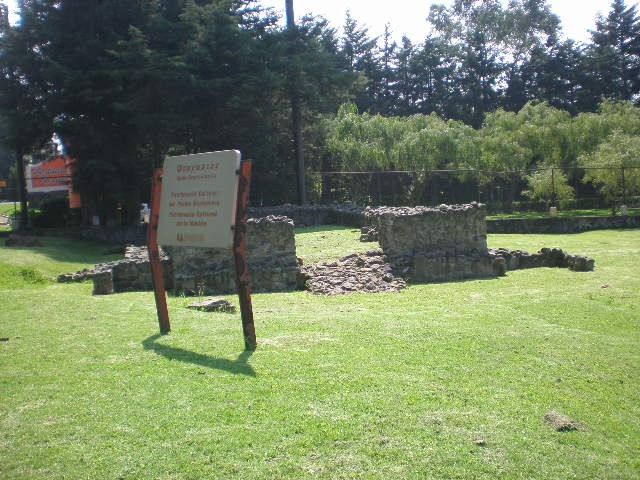The archeological zone of Ocoyoacac is one example of a settlement by people from Teotihuacan who arrived in the Valley of Toluca from the great metropolis. Based on carbon-14 dating performed at the sites of La Remonta (in the municipality of San Antonio), La Isla and La Loma (the latter two in the municipality of Calimaya), it is possible to state that the Valley of Toluca had a close ideological and political relationship with Teotihuacan as of 200-240 AD.
This has been confirmed in municipalities such as Ocoyoacac, Metepec, Tenango del Valle, Calimaya, Santa María Rayón, Santa Cruz Azcapotzaltongo and Calixtlahuaca. Materials recovered during excavations indicate that these places were mostly inhabited by groups dedicated to farming, pottery and exploitation of aquiferous resources, among other activities, who also lived in small domestic units.
Contact between the population of the Valley of Toluca and Teotihuacan is evident from materials such as green obsidian, the trade in which was controlled by Teotihuacan at the time, as well as slate and pottery imported from the big city. The great city’s architectural style and decoration was preserved in the Valley of Toluca, as reflected in its pottery.
The archeological zone of Ocoyoacac preserves one of the valley’s few architectural samples of the Classic period. This allows us to infer how they lived in small domestic units, mostly constructed in adobe on a stone wall base, which was a material available to the inhabitants owing to their location on the alluvial plain.
Civic-religious activities were not unknown to this settlement, as can be seen in certain elements such as its courtyards with a temple and in its utilitarian and decorative pottery. This group produced its own pottery, preserving the most significant features of Teotihuacan style both in the shape and decoration of surfaces and in decorative techniques and colours.
The big city imposed a great deal of order on the Valley of Toluca to supply itself with agricultural, lakeside and forestry resources. In this manner, it obtained food and various raw materials, such as lime, timber, reeds, grain and certain other products that are abundant in the region. Equally important was control over the routes of communication to the west and south-southwest.
Population growth after the Late Tlamimilolpan phases has been verified in Xolalpan and Metepec. At the time, the governing sites that controlled production and flow of goods in the Valley of Toluca would have been those located in Ocoyoacac, Calixtlahuaca and Santa Cruz Azcapotzaltongo. We should also consider that Ocoyoacac was strategic to controlling the route of passage through the Valley of Toluca.
The groups of people from Teotihuacan must have operated based on a hierarchy directed from Teotihuacan to emulate the great city’s organization. Upon its fall, these sites do not appear to have been abandoned, but show continuity instead, as can be seen at Santa Cruz Aztcapotzaltongo. However, we would need to broaden excavation of Ocoyoacac to determine the entirety of this cycle.







